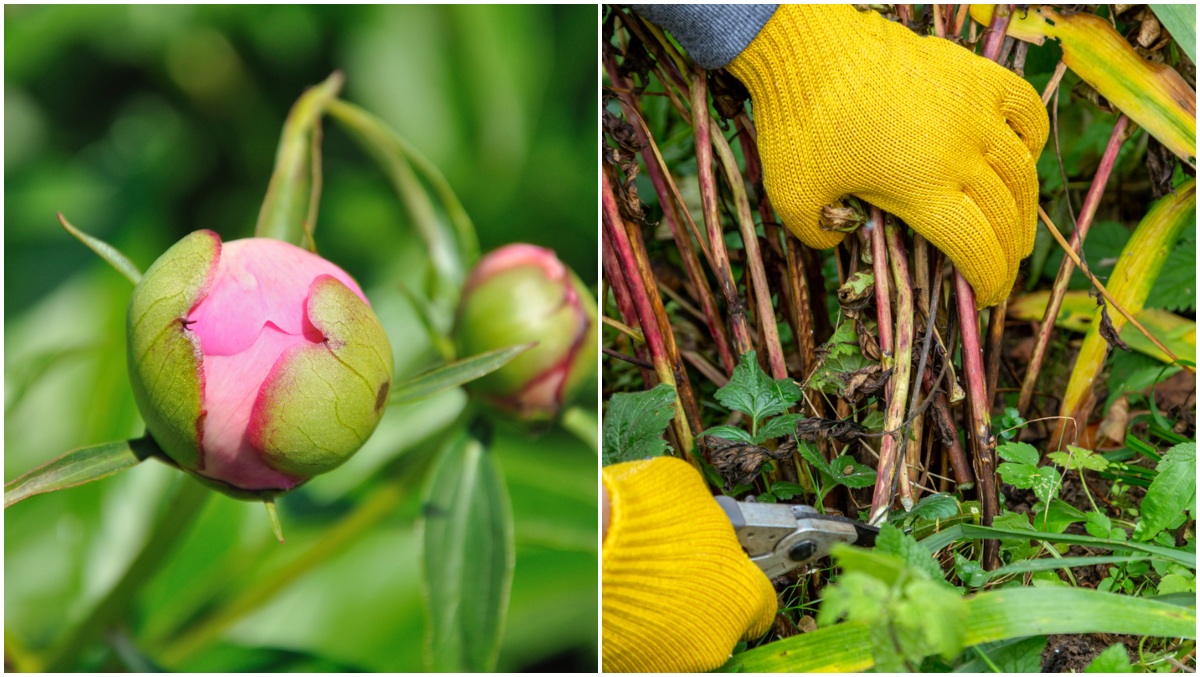
When I published this post about fertilizing peonies, I already knew I was going to write about some of the reasons why some peonies don’t bloom. But my decision was soon validated after I shared the link to my post on social media.
Not one, not two, but three of my Facebook friends complained about having (or having had) peonies that didn’t bloom. Or if the plant did set buds, the peony buds didn’t open.
And what is more interesting (at least for me, as a plant writer) is that every case looks a little bit different – someone has just planted the peonies, while someone else suspected the bush had been in the new-to-them garden for at least a decade. One of my friends is obsessed with reading all the gardening advice they can find, while another has more of a laissez-faire approach to their backyard blooms.
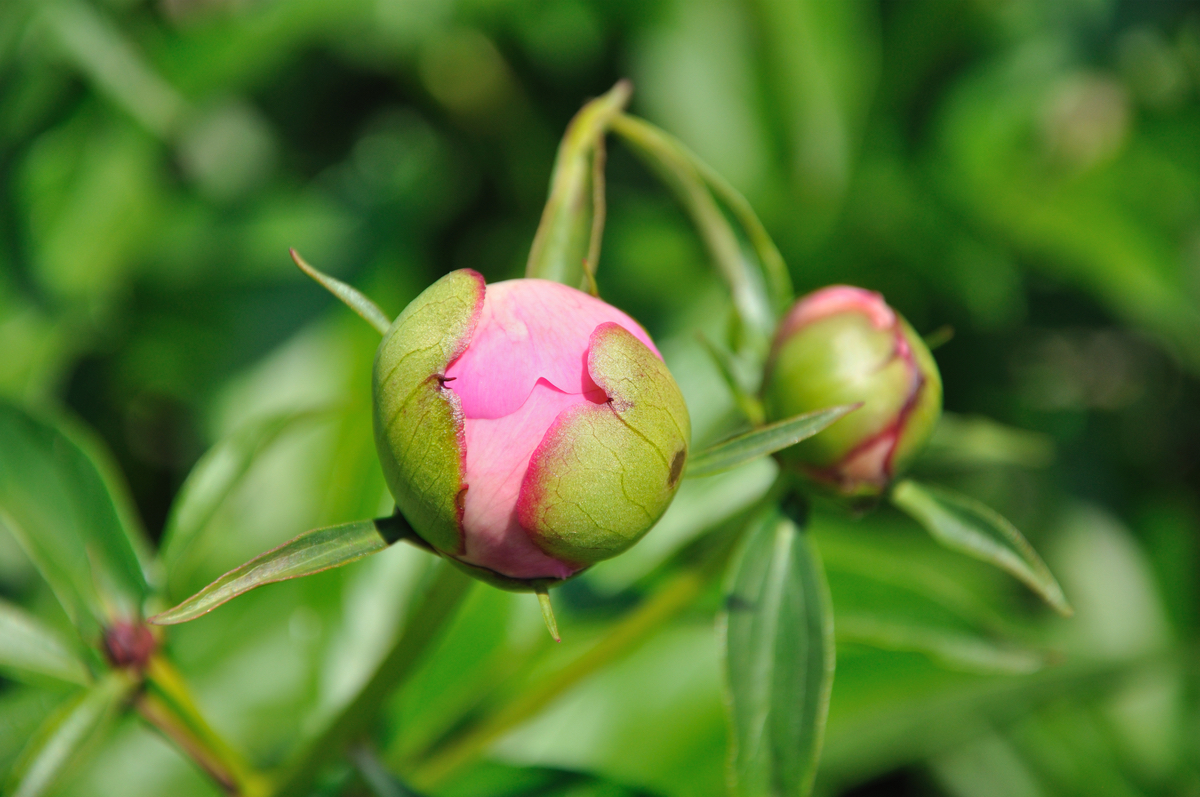
So I decided to dig deeper and explain the main reasons why your peonies don’t bloom, and what you can do to solve the problem:
1. Your peonies aren’t supposed to bloom at this time.
Do you know for sure what kind of peonies you have? I don’t mean to sound condescending, so I apologize if my question comes across as such. But with hundreds of peony cultivars available on the market, you have to make sure you know what kind you have before worrying about their lack of blooms.
Some peonies bloom in late spring, while others may bloom in midsummer. Depending on the climate you garden in, that can sometimes translate to a two-month difference in blooming time.
So before you reach out for that bottle of fertilizer, make sure you’ve got the timing right.
You can extend the blooming seasons of your peony patch by interspersing cultivars with different bloom times. Always check the grower’s label for this information before you purchase a new plant.
Here are a few suggestions to get you started:
Peonies that bloom in mid-spring:
‘Chocolate Soldier’
‘Athena’
‘Early Scout’
Peonies that bloom in late spring:
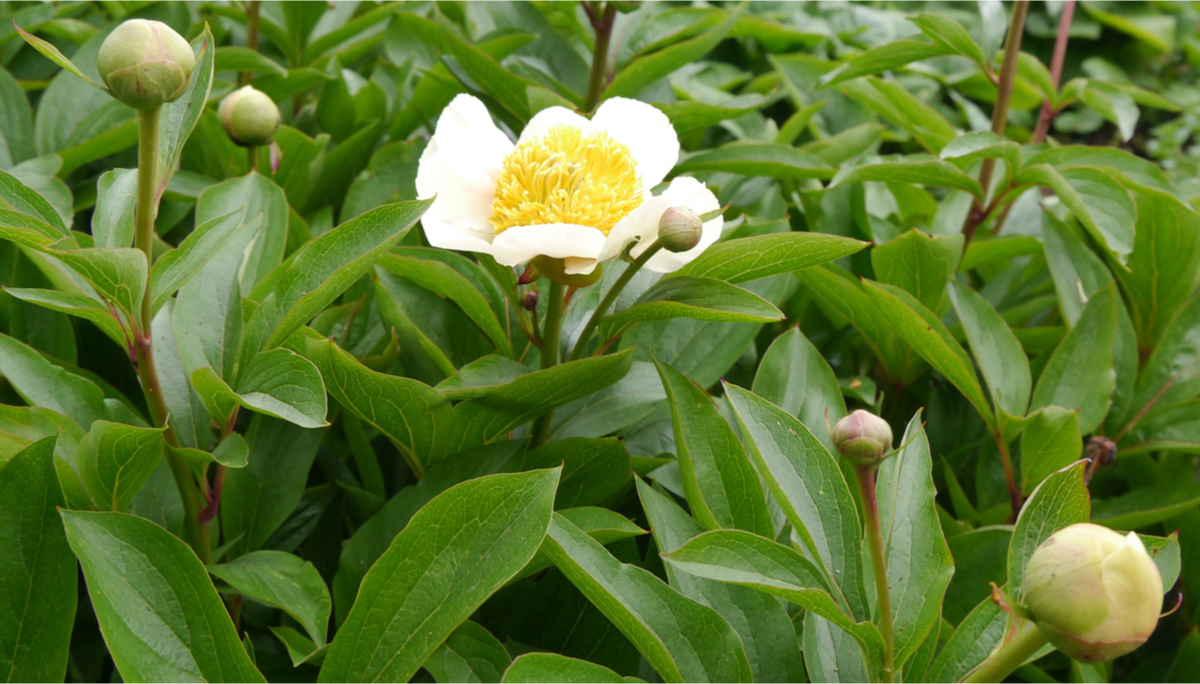
‘Claire de Lune’
‘Court Jester’
‘Rimpo’
‘Coral Sunset’
Peonies that bloom in early summer
‘Shawnee Chief’
‘Felix Supreme’
‘Duchess of Kent’
‘Mother’s Choice’
‘Cora Louise’
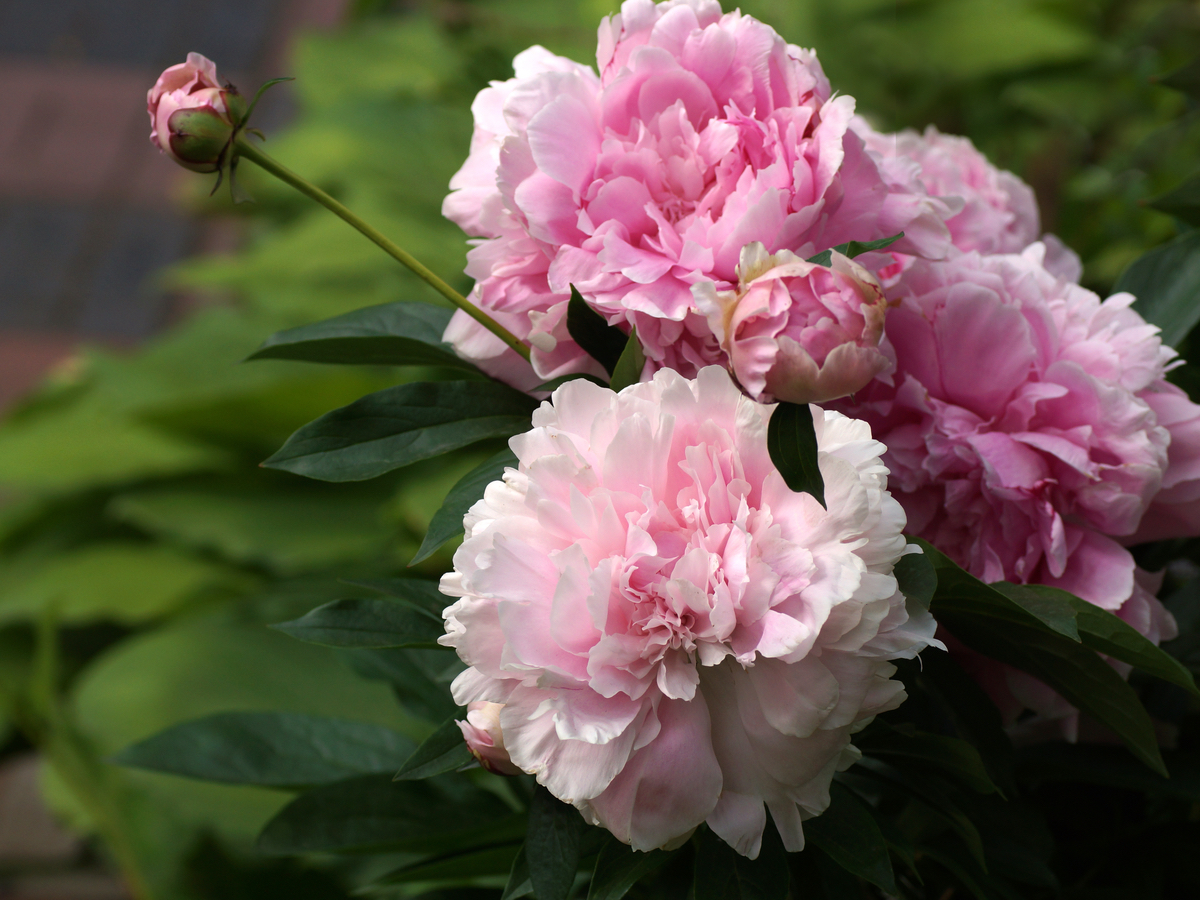
Peonies that bloom in mid-summer
‘Sarah Bernhardt’
‘Mr. G.F. Hemerik’
‘Bowl of Beauty’
‘High Noon’
2. Your peonies are too young to bloom.
Speaking of planting new peonies, keep in mind that it takes about three years for a small plant to get established enough to put out a rich display of blooms.
If you’ve just planted your peony, you should allow it some time to get acclimated to its new location. The first order of business for the plant is to redirect most of its energy into root formation, with very little energy left for blooms.
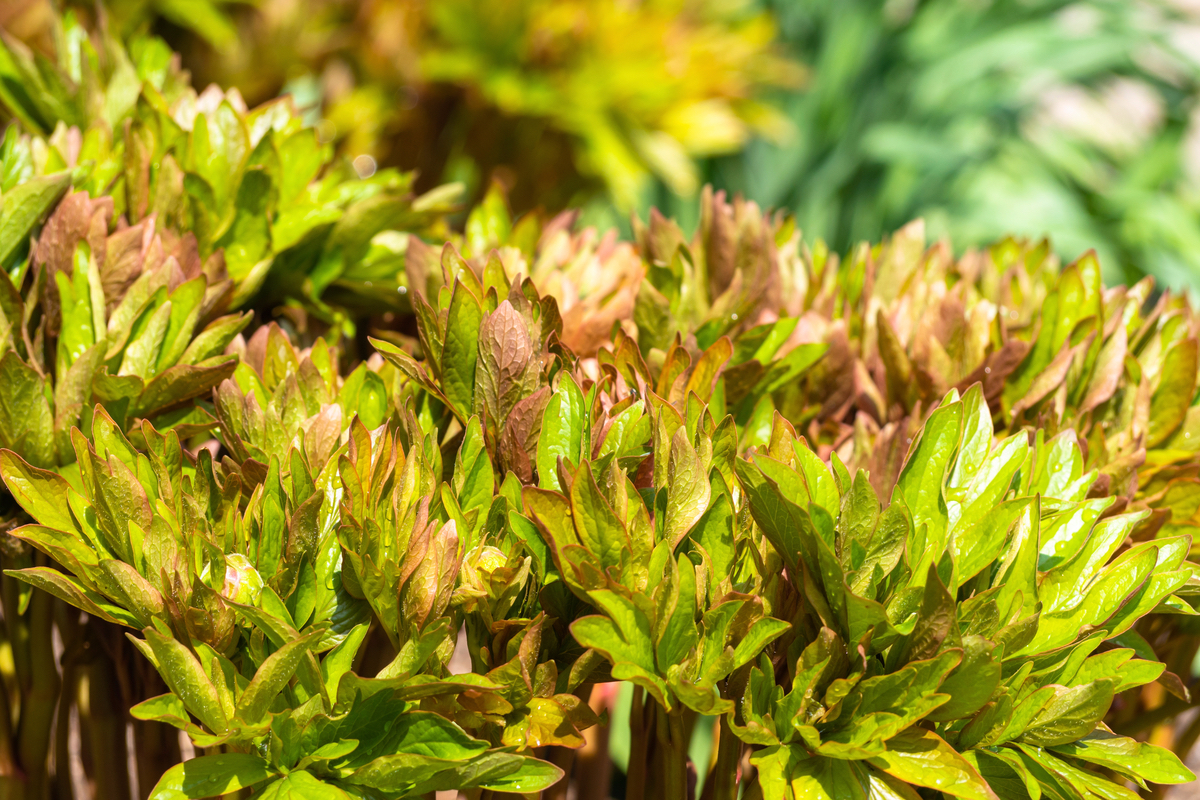
Also, try to resist the temptation to harvest blooms for flower displays during the plant’s first few years of growth.
And if you have successfully grown your peonies from seed, first of all, hats off to you! Secondly, you should know that it takes much longer (about four to five years) for plants grown from seeds to reach maturity and bloom.
3. You’ve just divided and transplanted your peonies.
To avoid disappointment, treat your newly transplanted peonies as if they were young plants because in essence, they are. Even if you have divided and removed them from an older, more established bush, you shouldn’t expect the new transplant to perform as well as the older growth. At least, not in the beginning.

This is especially true for peonies that have been divided in late summer – they will not bloom well the following spring, since you’ve interrupted their fall bud setting. Unfortunately, that’s the best time for dividing peonies but be prepared for slower growth for at least one season.
4. Your peonies are planted too deep.
Whether you’re planting a new peony that you’ve just purchased or a root division that you took yourself, make sure not to plant it too deeply. The “eyes” (the tiny shoots) of the peony tubers should only be about one or two inches below the surface of the soil.
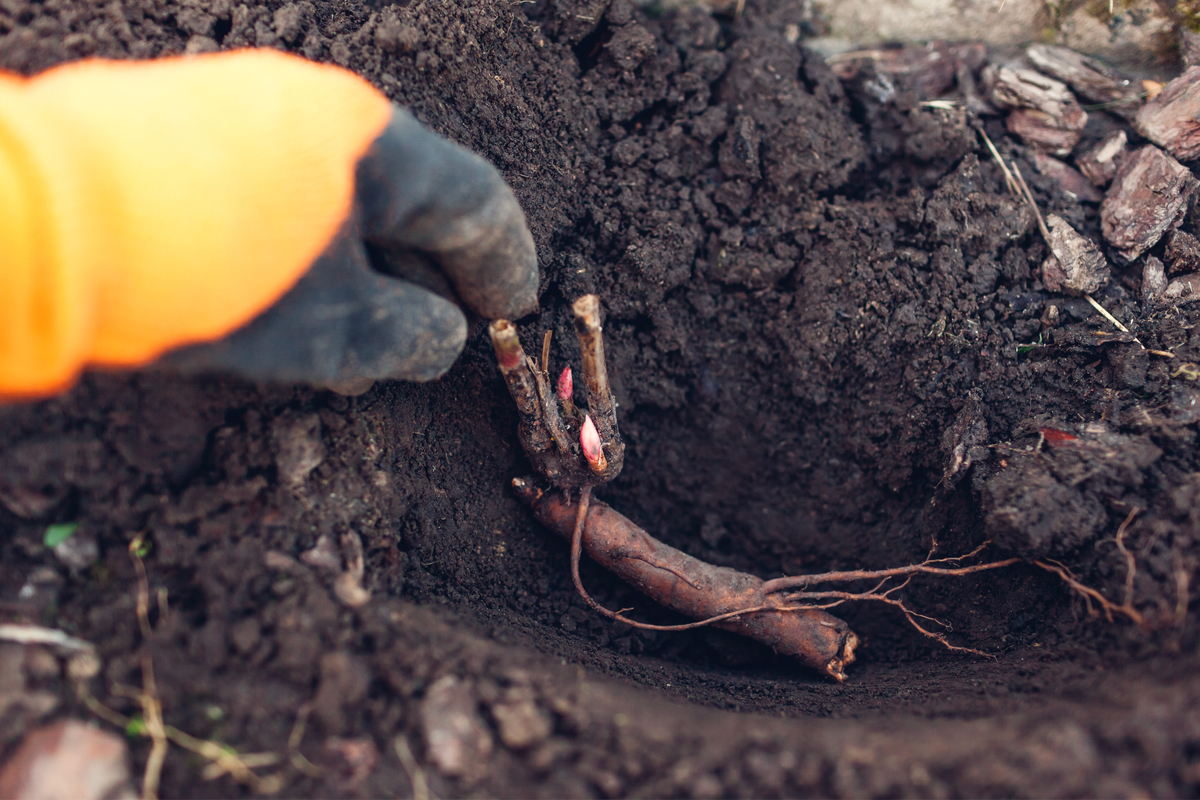
If you plant your peonies too deep, you may get some gorgeous foliage, but very little bloom. If this happens, just count it as a lesson learned and have patience until the next season. The plant will work itself into a better position before the arrival of the next growing season and you’ll get beautiful blooms.
While we’re talking about planting depth, make sure you take into consideration the layer of mulch that you’ll be adding on top (to keep the moisture in, the weeds down and the soil temperature even, of course). Plant or transplant with that added height in mind.
5. Your peonies need more sun.
One of the most common misconceptions in gardening (and one that I often catch myself believing, even though I should know better) is that “tolerant = thriving.”
Let me explain. In the case of peonies, the fact that they can tolerate shade doesn’t mean that they will thrive in the shade.
Your peonies will thrive in full sun and need about six hours of direct sunlight in order to store enough energy for beautiful blooms. Yes, they will tolerate light shade, and they may even set buds, but the bloom will be sporadic.
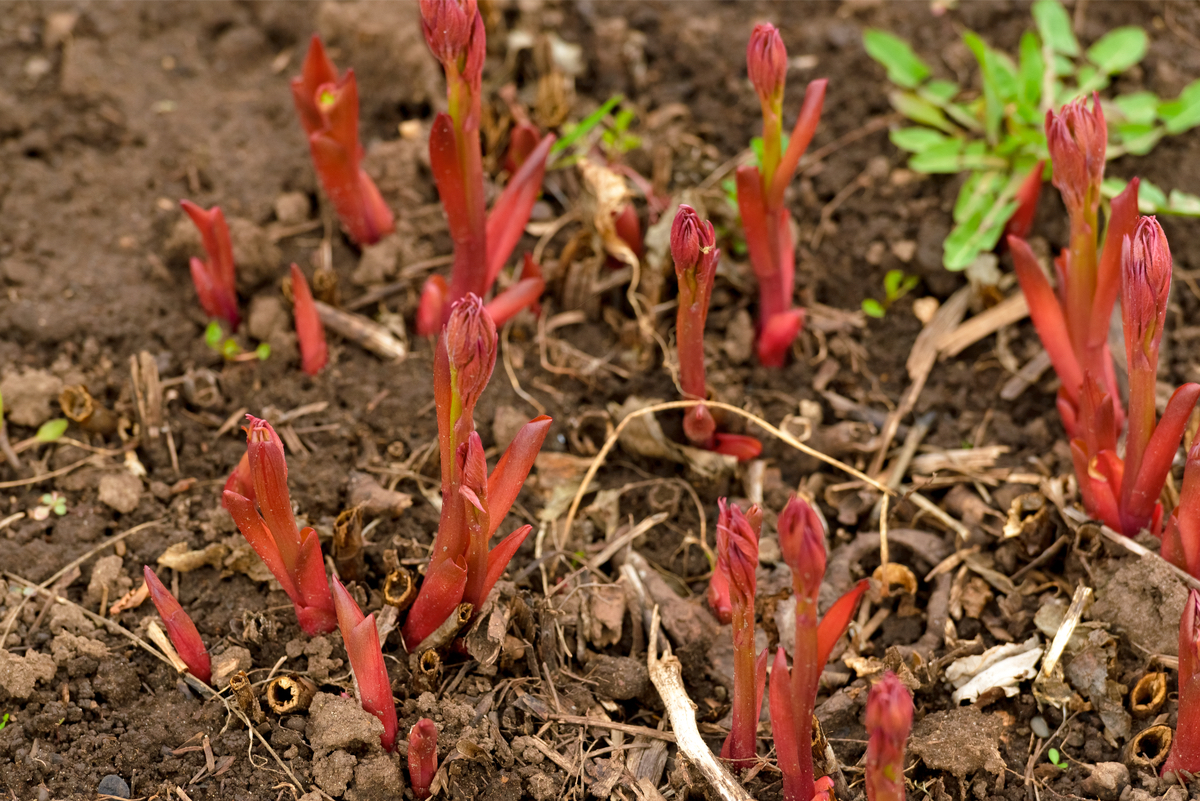
This is an important factor that sometimes changes without us even noticing. For example, when you first planted your garden a few years ago, you made sure to plant your peony in full sun. But in the meantime, the shade map of your backyard may have changed. Maybe you put up some structures (such as a gazebo or a pergola) or maybe some of the trees and shrubs in your yard (or the neighbors’) are casting more shade than when you first decided on a spot for your peonies.
What you can do in this case is to dig out the peonies in the fall and transplant them to a new area that gets enough sunlight.
6. You’ve used too much fertilizer on your peonies.
In my opinion, over-fertilization is a case of good intentions coupled with poor execution. Although sometimes it’s also a case of following the instructions on the bottle of fertilizer (which often overestimate how much fertilizer you need).
First of all, keep in mind the key to fertilizing any plant that blooms: low nitrogen. Nitrogen, one of the main components in fertilizers, promotes foliar growth. But the more energy the plant puts into lush foliage, the less energy it has to devote to flowers. (Yes, even if you’ve been feeding it.) So you may have a green robust bush with only a couple of flowers in bloom.
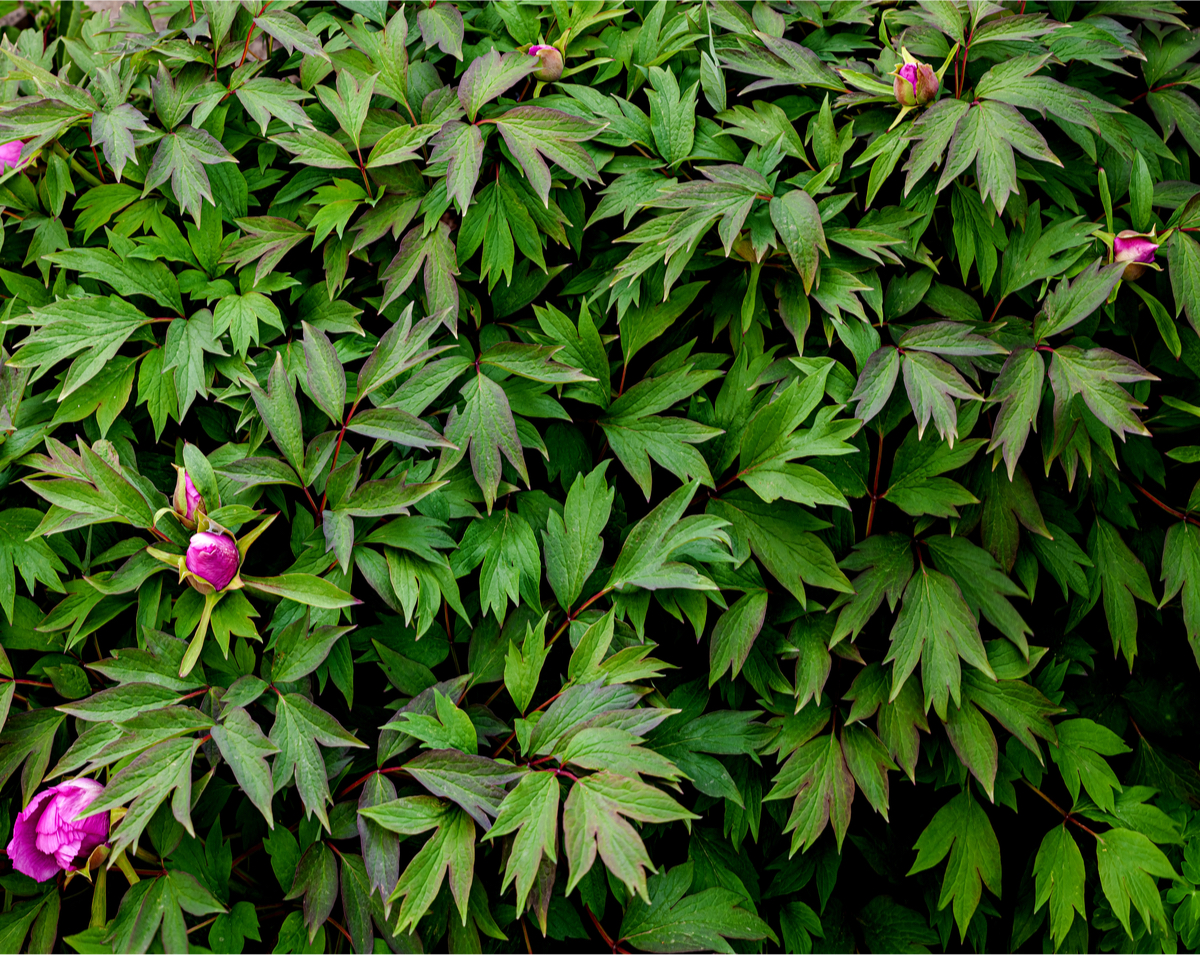
The solution, especially if you’re prone to over-fertilizing, is to add organic compost to the soil around the peony plants and work the compost into the ground (gently, don’t disturb the root structure).
You can also add a balanced fertilizer (10-10-10) or a fertilizer low in nitrogen (5-10-10) in early spring, before the new growth appears.
For a complete guide on how to fertilize peonies, have a look at this article.
7. You pruned your peonies too aggressively or too early.
Peonies use their foliage to feed the roots below through photosynthesis. So even when the flowers are gone, the plant is still working hard for next year’s blooms that are beginning to form under the surface of the soil. If you disrupt this cycle by pruning the foliage too early, before it’s had time to feed the new growth, you may end up paying for your impatience the following growing season.

So don’t remove the foliage prematurely. You should only cut it back to the ground after the first frost, when the leaves have browned.
And if you’re growing tree peonies, never prune them down. Unlike their herbaceous cousins, tree peonies are shrubs and they will not grow back if you chop them down to the ground.
8. Your peonies suffered from late-freeze damage.
This is often the case when the buds do appear, but they never open up into full blooms (a phenomenon also called ‘bud blast’). In my opinion, it’s even more irritating than having no buds at all, because it does create a sense of anticipation that fails to materialize.
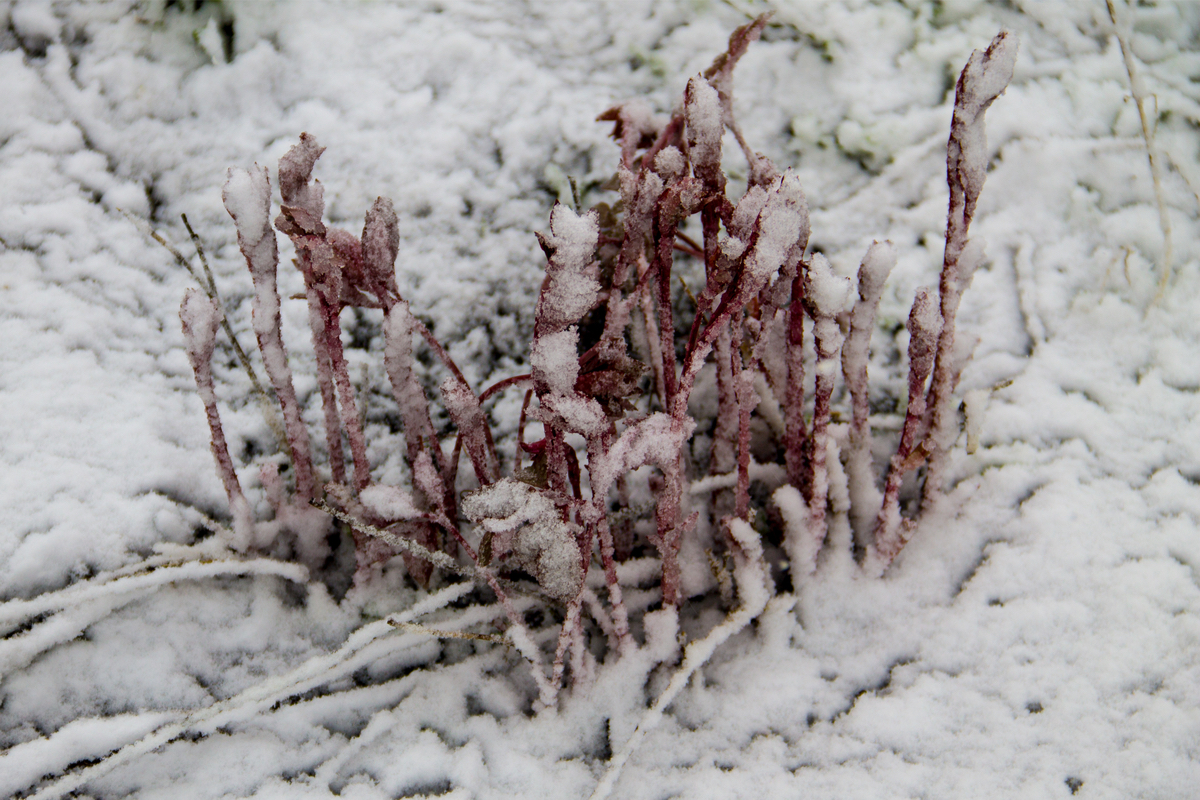
Unfortunately, this happens more and more often because of unusually warm early spring spells. Plants are tricked into believing it’s time to bloom, then a hard freeze in late April or May comes and zaps your peony’s blooms.
You could try to insulate the plant with a frost cloth or improvise a mini-tunnel. But if the temperature drops significantly below freezing for more than a day, there’s not much you can do about it.
9. Fungal diseases are attacking your peonies.
Again, this is another scenario in which your peony does get buds, but never blooms.
One of the most common fungi to attack flower buds, especially in wet and cool conditions, is the Botrytis blight, also known as gray mold. You’ll see dark splotches on the stem and on the leaves; often, the peony will look wilted and the bud will just turn brown and shrivel.
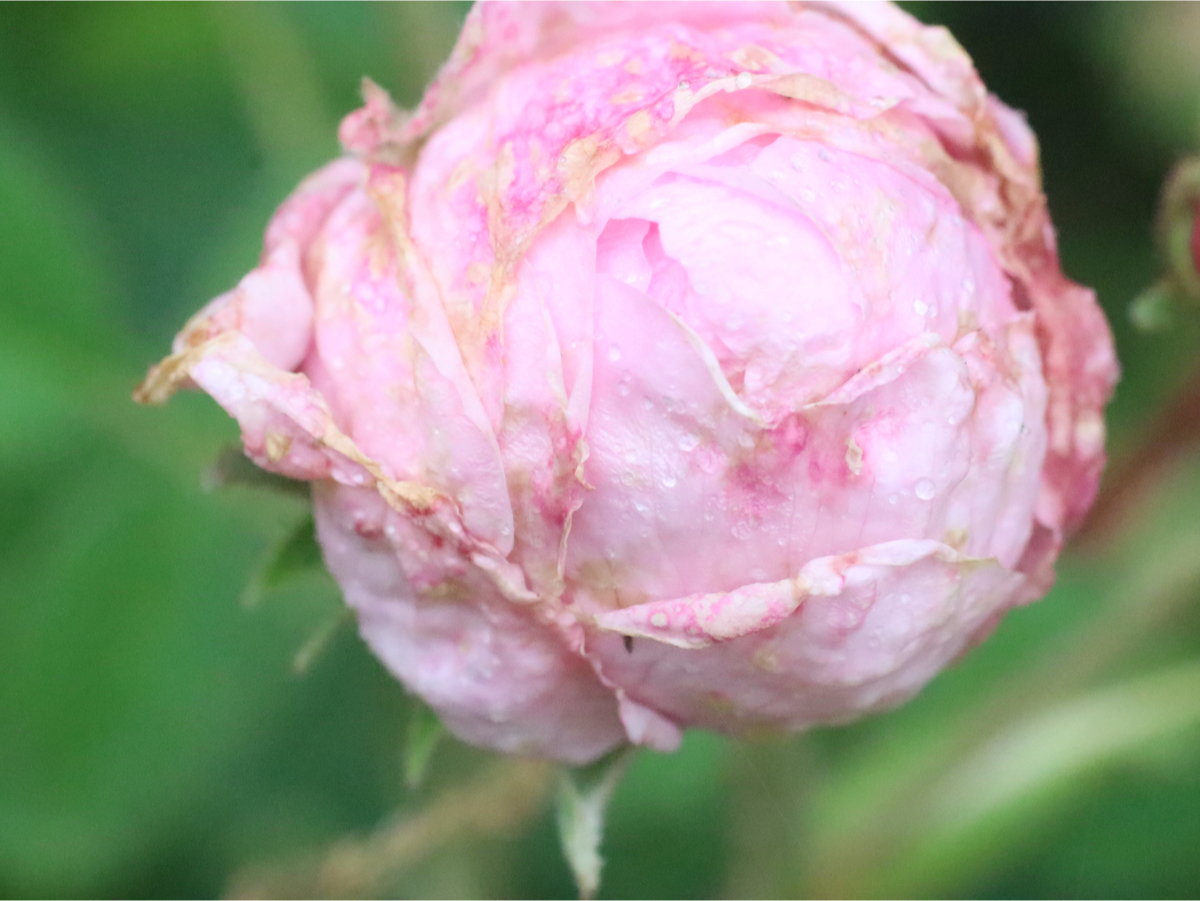
Let’s just say Botrytis blight is not a pretty sight. You can try to fight it by using a fungicidal spray specially designed for Botrytis. Unfortunately, the blight spreads very fast which makes it hard to catch in the early stages.
The best solution is to clean the site for the following year. Remove and destroy any diseased foliage or buds as soon as you notice them. Improve air circulation and try to keep the foliage dry when you water the peony bush. Avoid using spray hoses or dousing the plant in water.
10. Your peonies can’t complete with surrounding plants.
Peonies are not necessarily territorial plants, and they don’t spread aggressively. But they still need to have their own space, especially if they’re under threat of being encroached upon by shrubs or trees.
Peony roots, no matter how robust, cannot compete with the root systems of a tree, which can create dry conditions and very compacted soil. This can often result in poor blooming or no blooms at all.
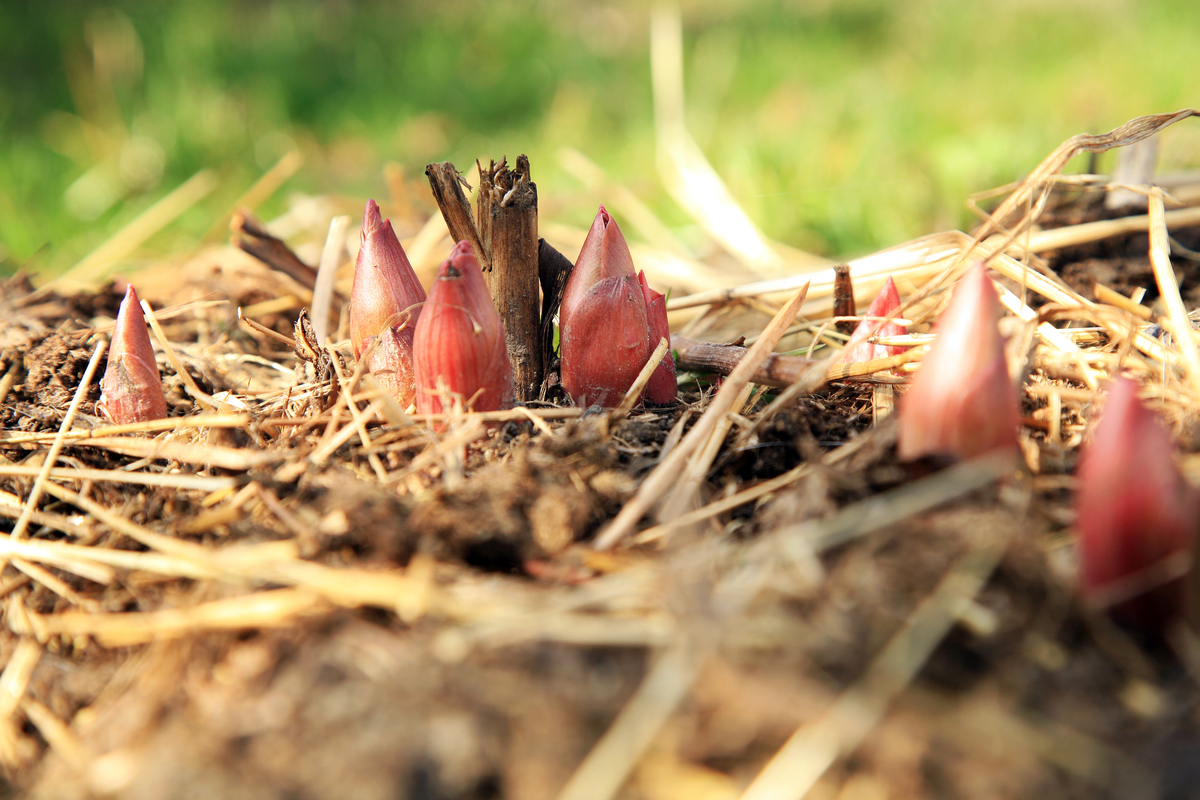
I hope this explanation of why your peonies aren’t blooming has been helpful. I know it may look overwhelming, especially for new gardeners, but if you work to eliminate the causes methodically and with a lot of patience, you will be rewarded with a wave of blooms next growing season.
